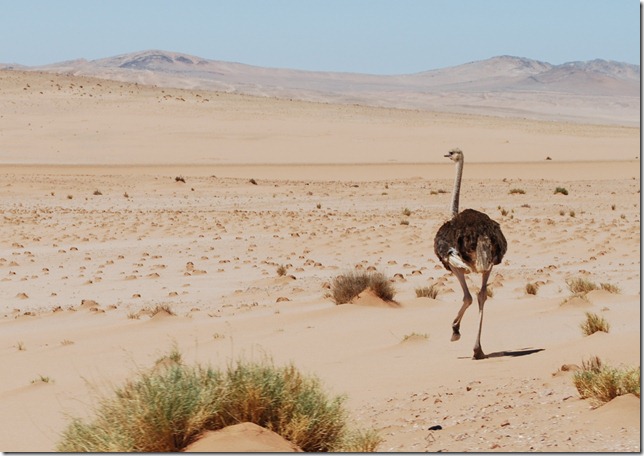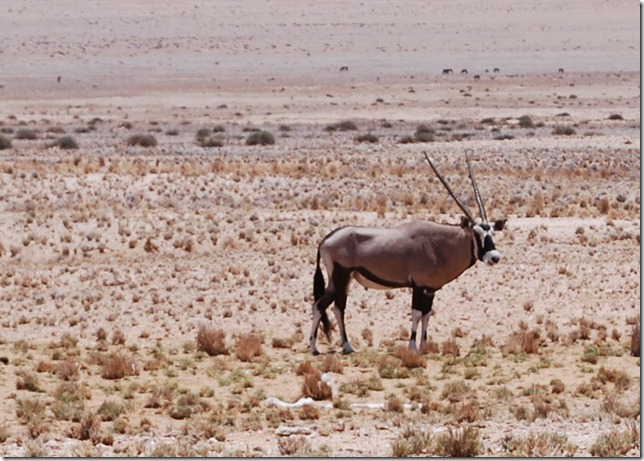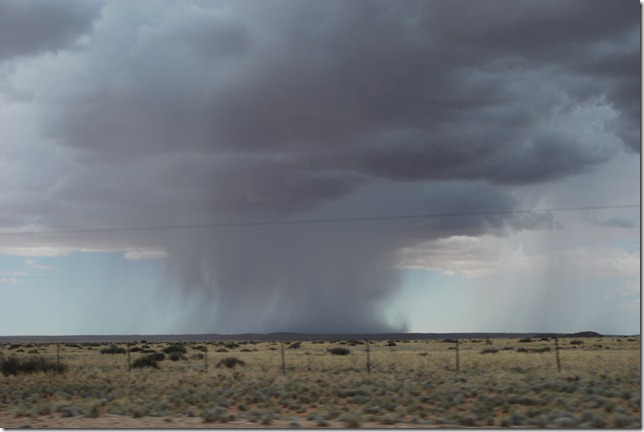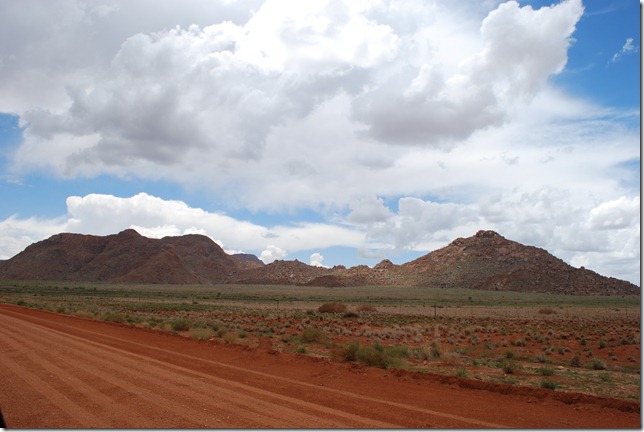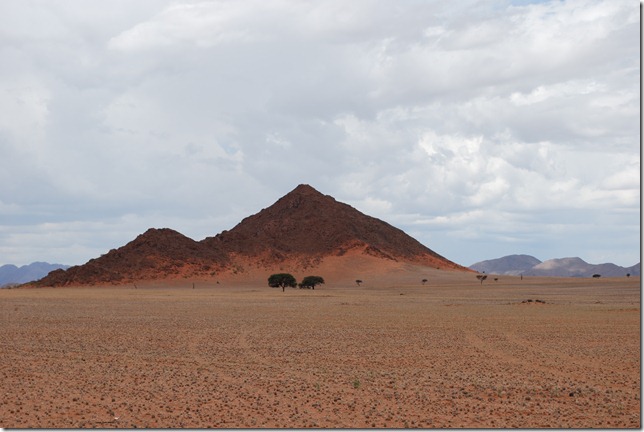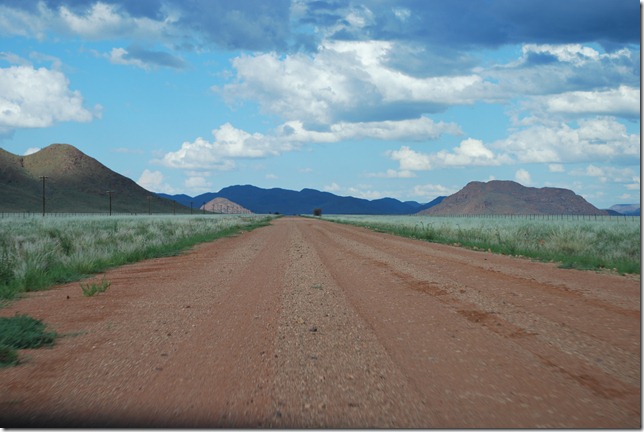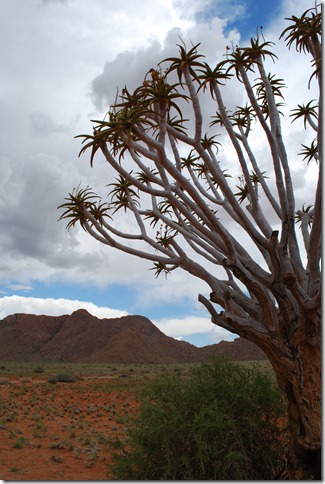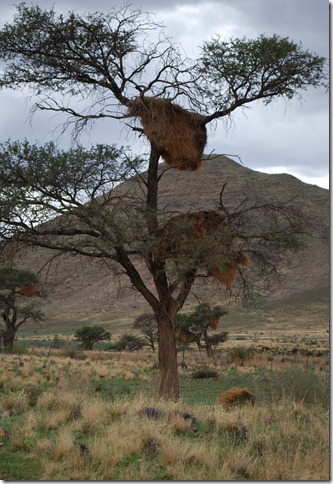We really didn’t know what to expect in terms of terrain, road conditions, and wildlife when we left Kolmanskop for Sossusvlei, but we soon found out. The barren desert continued as we drove east from Kolmanskop, but we’d been driving only 5 minutes so when we spotted two wild ostriches grazing on the small tufts of growth near the side of the road. It turns out that ostriches are easily spooked, so you’re most likely to have pictures of ostrich tails as they run from the car, but we got a couple of decent shots and loved watching the ostrich run with its characteristic bouncing lanky trot, head and body swaying the each long-legged step.
A bit further on we came to feral desert horses. How a bunch of wild horses came to be living in the Namibian desert isn’t exactly clear, but one theory is that they were left to fend for themselves by German or South African soldiers that were on the move and could no longer feed or care for them. They’ve apparently lived there for close to 100 years and only in the last 15 years have they been able to benefit from a small watering hole that was built for them. When we stopped, we got to see several ostriches and a beautiful oryx (gemsbok in Afrikaans) hanging out in the vicinity of the watering hole as well.
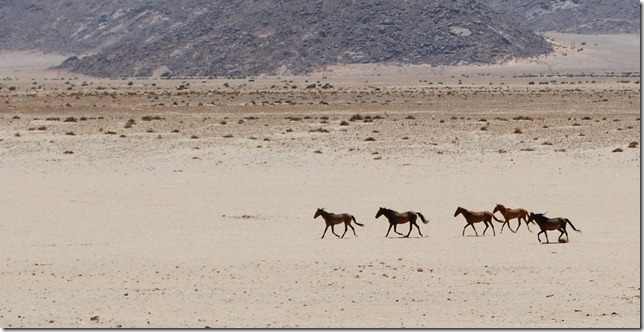 Feral horses coming in for a drink
Feral horses coming in for a drink
After only an hour we left the tarred road (only a couple exist in Namibia) and turned our little VW onto a dirt road and headed north. The dirt roads here are completely different than in the US in several ways. One difference is that they’re much wider (at least 3 “lanes” wide) and are generally well maintained by road graders. The other big difference is that bridges are completely absent. In most cases the temporary rivers created by the rains during the rainy season just run right across the road, or to put it more accurately, the road is occasionally replaced by a riverbed crossing. In some cases the riverbed has been paved over with two lanes of concrete to make crossing easier, but only in a few spots. We’re in the rainy season now, and as we started driving north we could see rainstorms dumping water on the dry ground as they moved quickly along. Rains in the desert are short-lived, typically lasting only a few minutes, but can be pretty intense. As we drove I started to understand why the rental car agent had so much to say about flat tires.
The farther north we went, the more beautiful the terrain became – red dunes to the west, rugged mountains and plateaus to the east, and north, and large flat valleys, or floors, that were more or less covered with grasses, shrubs, and trees, depending on the amount of rain that they had seen. Namibia is a land of incredibly beautiful colors and textures, especially in the light of sunrise or sunset. It’s difficult to describe how many different colors and shades you see and how beautifully they complement each other. Greens, reds, yellows, browns, and purples from dunes, deserts sands, mountains, living, dead, and dying plants, and exposed and eroded mountain strata stretched over the full field of view. There were more exclamations about the beauty of the landscape than during any other drive we’ve taken. The magnitude of the visible distances as well as the differing types of terrain and variety of colors we something we’d never seen before.
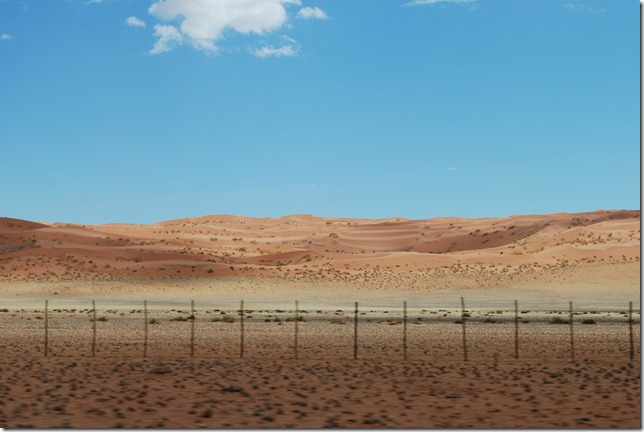 Our first glimpse of the red dunes
Our first glimpse of the red dunes
We were making good time until we stopped for fuel and were warned that we should take a different route than the one we were planning to avoid a section of road that was in very poor repair and guaranteed to flat a couple of tires. Unfortunately, the detour involved a large, soft, dry riverbed. The local that described the riverbed told us that there would be a steep descent into the riverbed followed by a large, soft run though sand. His instructions were to stop and the edge, then “put foot” and try to speed across. When we finally reached the riverbed, we got out and scouted a path then promptly banged the frame of the car coming down the steep incline and got stuck in the sand. Thoughts of spending the night at the nearby farm or having to arrange a two out were running though my head, but luckily we weren’t the first to get stuck there and there and Tracey soon spotted a few pieces of particle board laying. We were able to slip the particle board under the tires and after several attempts and a bit of “putting foot” our little white conveyance finally pulled through to the other side.
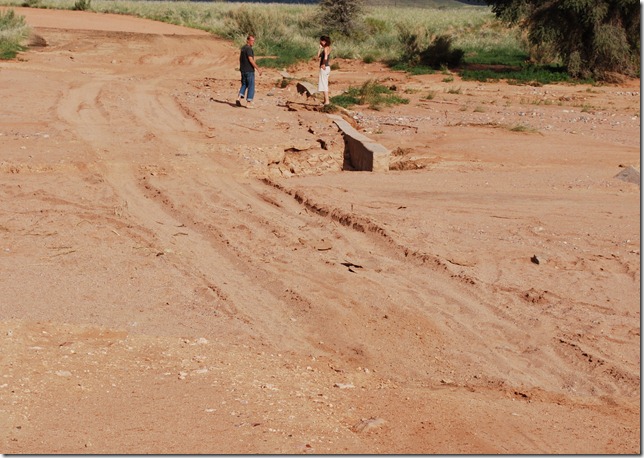 Scouting out the riverbed (didn’t do any good, btw)
Scouting out the riverbed (didn’t do any good, btw)
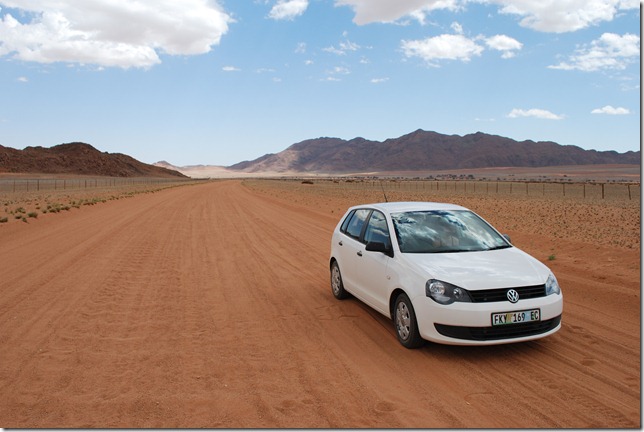 The VW Polo is now certified for off-roading
The VW Polo is now certified for off-roading
Aside from all of the natural beauty, the rest of the drive was pretty uneventful, although did see lots of springbok, a couple jackals, and lots of massive community weaver nests. The weaver birds build huge shared nests like apartment complexes that start to dwarf the hosting tree. Each group seems to be trying to outdo the next with the size of their nest. Some were so large that they looked like they must be killing the tree, and someone had helped mother nature by propping up a log to support a tree branch with a particularly large nest far out on it.
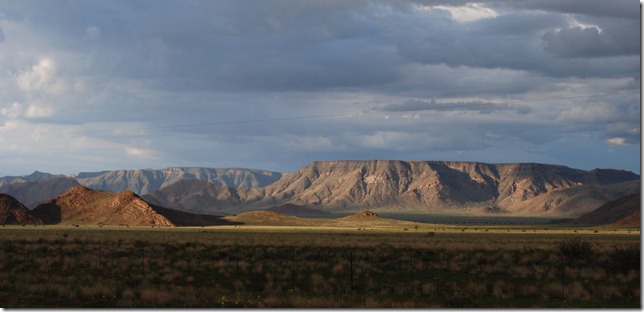 Plateaus drenched in setting sunlight
Plateaus drenched in setting sunlight
We were able to reach our destination just before sunset, but we hadn’t worked out any accommodation for the evening yet. Luckily for us, we really scored when we stopped and met Fritz at the Sossusvlei Campsite. He was a former South African police officer who had moved to Namibia after Mandela came to power. He was a real character – funny, kind, and very accommodating. Not only were the rates cheap, but he also had a few mattresses we could use for free, a swimming pool fed from his excellent well, cold beer, and hot water. The campsites here are a bit different than in the US. Each includes a kitchen area, shower, regular toilet, braai facilities, and garage-style parking to protect you from the strong desert winds. After killing a scorpion on a counter and a large sinister-looking spider in the garage area, we were glad to be sleeping on mattresses inside instead of the dirt outside, even if there weren’t any doors separating inside from outside.


